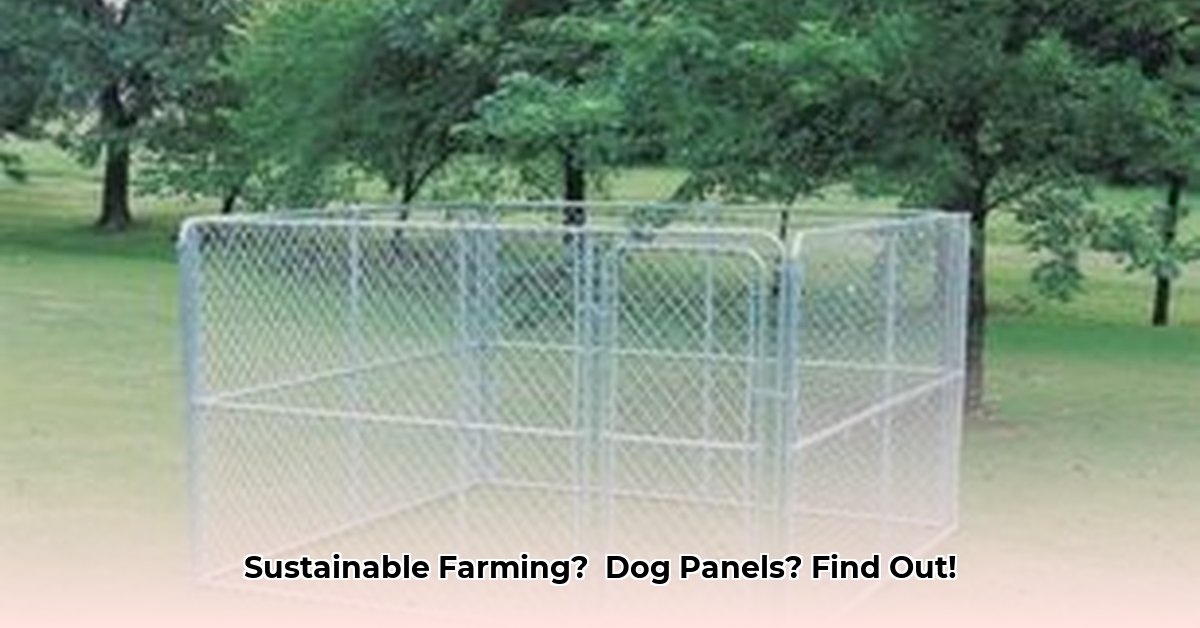
Choosing the Right Dog Panels for Your Farming Needs
Selecting the appropriate dog panels from Tractor Supply or similar retailers is crucial for effective and safe implementation in your sustainable farming practices. Several key factors should guide your decision:
Material: Metal panels (often welded wire) offer superior durability and longevity, making them suitable for containing larger or more robust animals. However, they're typically more expensive than wood panels. Wood panels, while more budget-friendly, may require more frequent maintenance and replacement due to weathering. The material choice should align with your budget and the specific needs of your animals.
Size and Height: Panel height is paramount to prevent animal escapes. Taller panels are necessary for larger animals, while shorter panels may suffice for smaller animals or for creating smaller enclosures. Consider the size and climbing ability of your animals when selecting panel height.
Features: Some panels include gates for easy access, while others may offer locking mechanisms for enhanced security. These added features can significantly improve the practicality and safety of your setup.
For more on farm equipment, check out this helpful resource.
Setting Up Your Dog Panel System: A Step-by-Step Guide
Successful implementation hinges on proper installation. Follow these steps for a secure and effective system:
Planning: Beforehand, determine the exact placement of your panels, considering factors such as accessibility, existing structures, water sources, and potential obstacles. A well-thought-out plan can prevent future complications.
Ground Preparation: Clear the area of any debris, rocks, or weeds that might compromise panel stability. A level and clear ground ensures a secure foundation for your panels.
Panel Securing: Employ sturdy stakes or posts to firmly support the panels, especially in areas prone to strong winds. Thoroughly drive stakes into the ground for maximum stability.
Assembly and Connection: Follow the manufacturer's instructions for panel assembly. Use strong fasteners to ensure a secure and structurally sound construction.
Creative Uses for Dog Panels on Your Farm
Beyond traditional uses, dog panels offer surprising versatility in sustainable farming:
Rotational Grazing: Create temporary paddocks for rotational grazing, promoting healthier pastures and reduced soil erosion. This method improves both animal welfare and land health.
Crop Protection: Protect young plants from herbivores by placing panels around seedlings, offering an affordable and easily adjustable solution.
Animal Management: Establish distinct zones within pastures to separate animals for various needs (e.g., pregnant animals, those requiring special care). This allows for flexibility in animal management and improved welfare.
Weighing the Pros and Cons: A Balanced Perspective
While dog panels offer numerous advantages, it's important to acknowledge their limitations:
| Advantages | Disadvantages |
|---|---|
| Adaptable and portable | May require frequent repair/replacement |
| Cost-effective | Not suitable for all livestock/sizes |
| Easy installation and relocation | Weather-dependent stability |
| Promotes rotational grazing and pasture health | May have limited aesthetic appeal |
Safety First: Prioritizing Animal and Human Well-being
Regularly inspect panels for damage (rust, breaks, loose connections). Promptly repair or replace damaged sections to prevent escapes or injuries. Animal welfare and human safety must remain paramount.
The Future of Dog Panels in Sustainable Agriculture
While research is ongoing, the adaptability and cost-effectiveness of dog panels suggest significant potential for sustainable farming. Future studies might focus on optimizing panel designs for specific needs, developing more durable and weather-resistant materials, and assessing their long-term environmental impact. The possibilities are compelling.